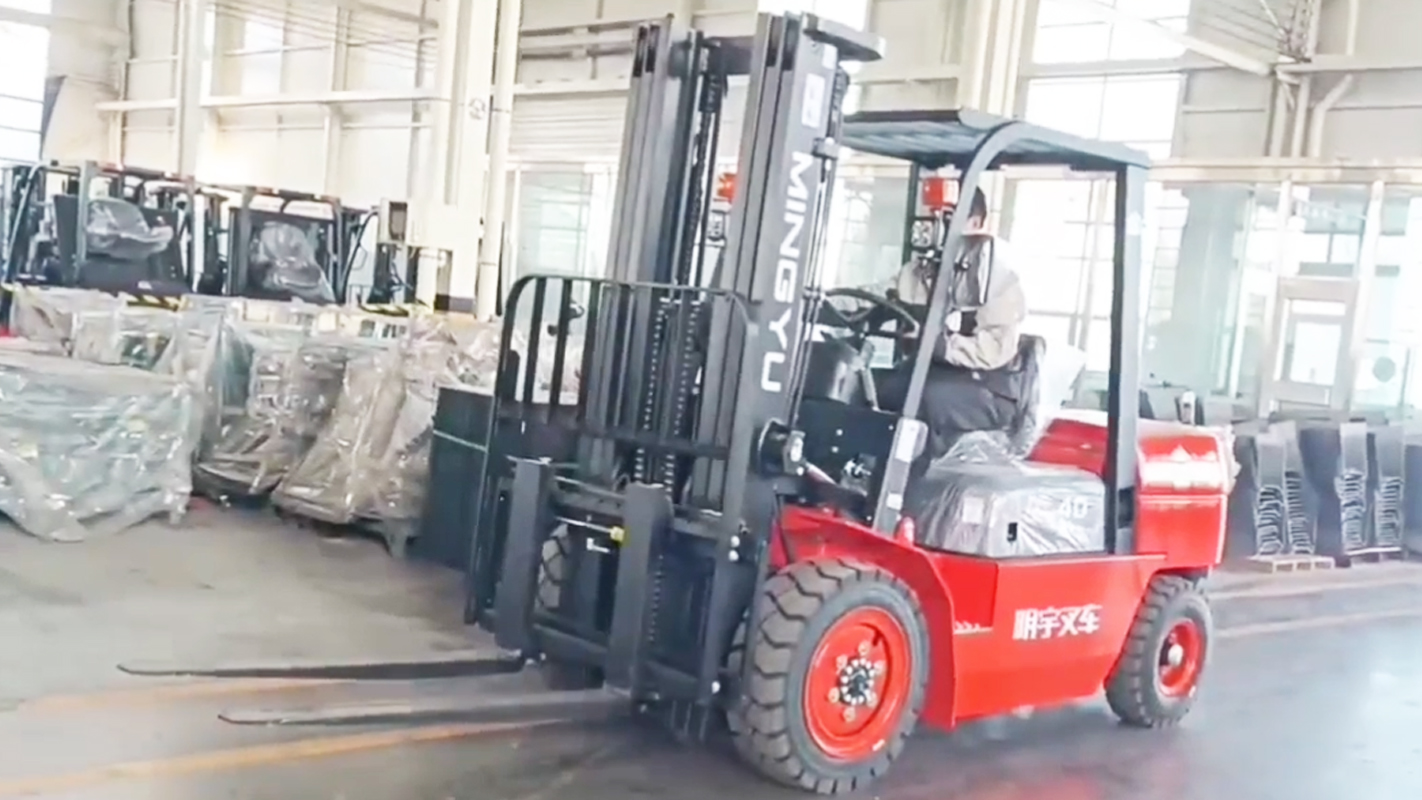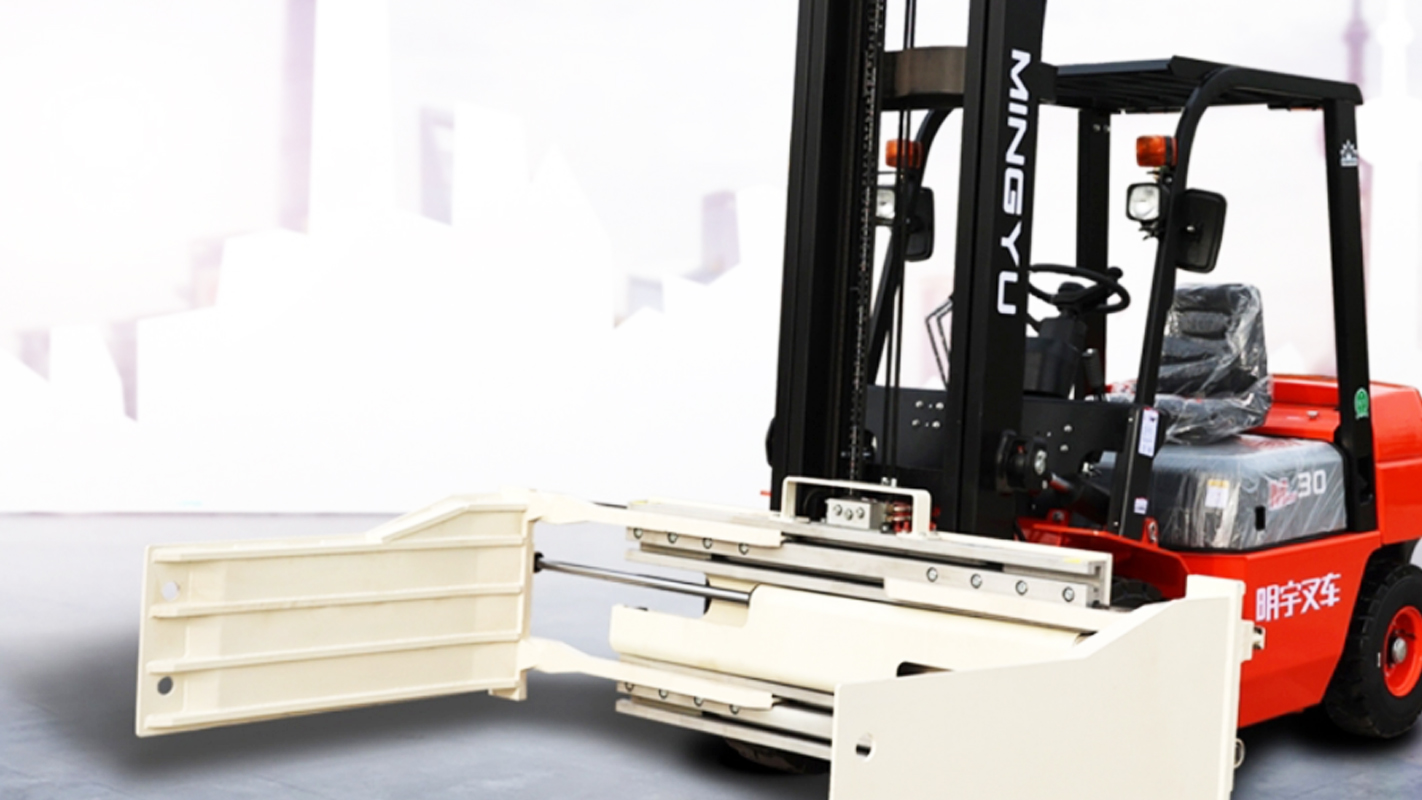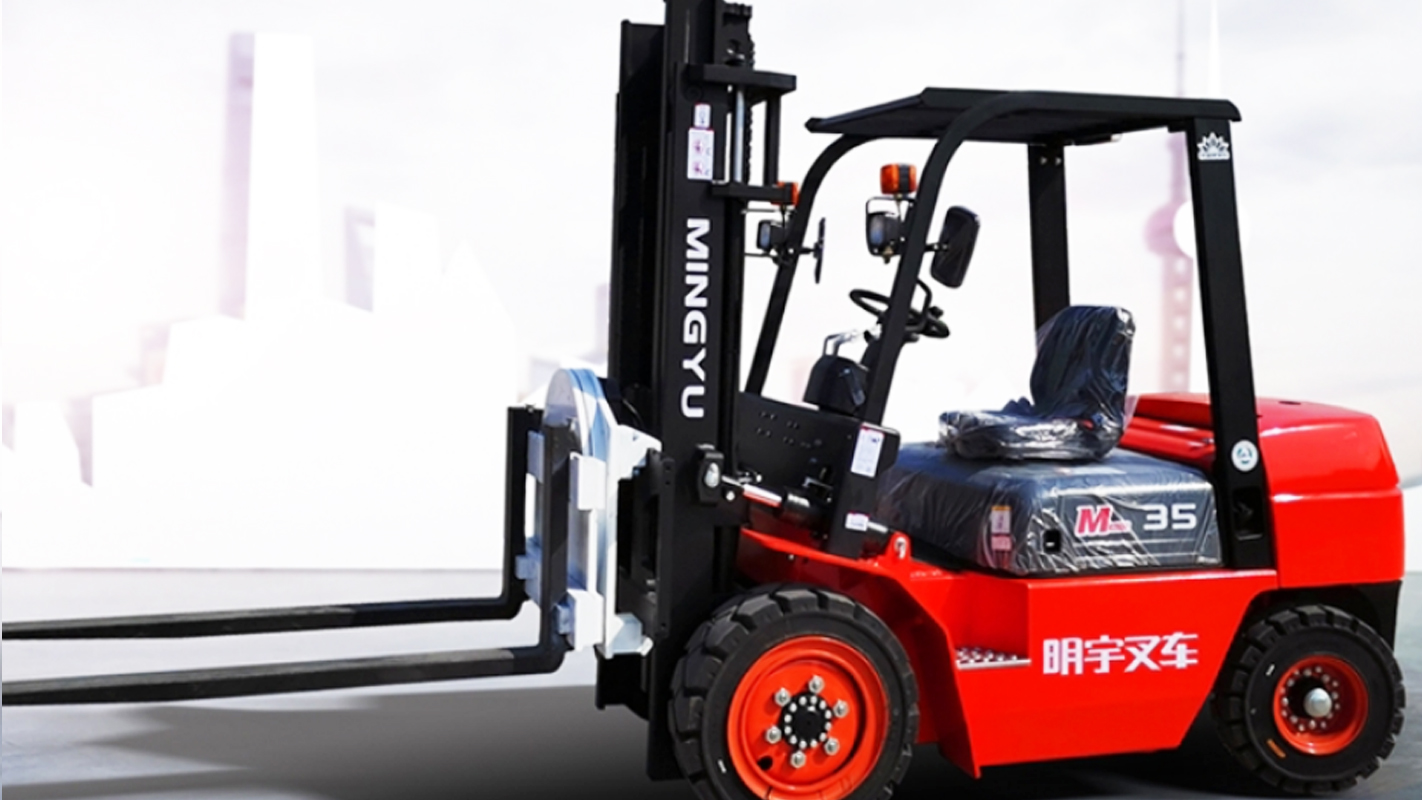I. Introduction
A. Briefly introduce the challenges of operating forklifts on gravel: "Operating forklifts on gravel presents unique challenges, demanding machines that can withstand uneven surfaces, maintain traction, and ensure operator safety. Traditional warehouse forklifts often struggle in these conditions, leading to inefficiency and potential damage."
B. Highlight the importance of selecting the right forklift for such conditions: "Choosing the correct forklift for gravel terrain is crucial for maximizing productivity, minimizing downtime, and ensuring the safety of operators and surrounding personnel. This selection process involves considering various factors, from tire types to drivetrain configurations."
C. State the article's purpose: to explore suitable forklift types and features for gravel terrain: "This article aims to provide a comprehensive guide to selecting and operating forklifts on gravel, exploring suitable forklift types, essential features, and best operational practices."
D. Briefly mention safety concerns with gravel operation: "Gravel operation increases the risk of tipping, tire damage, and load instability, therefore safety should be paramount."
II. Key Considerations for Gravel Terrain
A. Tire Types and Traction:
Pneumatic tires vs. solid/cushion tires: "Pneumatic tires, with their air-filled design, provide superior traction and shock absorption on gravel compared to solid or cushion tires, which are designed for smooth surfaces."
Tread patterns and their impact on traction: "Aggressive tread patterns, similar to those found on off-road vehicles, enhance grip and prevent slippage on loose gravel. Deep grooves are essential."
Tire pressure and load distribution: "Proper tire pressure is crucial for optimal traction and load distribution, preventing excessive wear and ensuring stability. Over inflation can cause a rough ride, and under inflation can cause tire damage."
B. Ground Clearance and Stability:
Minimum ground clearance requirements: "Sufficient ground clearance is essential to prevent undercarriage damage from rocks and debris. Forklifts with higher ground clearance can navigate uneven terrain more effectively."
Wide wheelbase and low center of gravity: "A wide wheelbase and low center of gravity enhance stability, reducing the risk of tipping on uneven surfaces. This is critical for safe operation on gravel."
Stability control systems: "Modern forklifts may have stability control systems that can aid in safe gravel operation."
C. Power and Drivetrain:
Engine type and power output (diesel, LPG): "Diesel and LPG engines provide the necessary power for demanding gravel operations. Diesel engines are favored for their torque, which is essential for heavy lifting and navigating inclines."
All-wheel drive vs. two-wheel drive: "All-wheel drive (4WD) provides superior traction and control on gravel, especially on inclines and uneven surfaces. 2WD forklifts may struggle in these conditions."
Transmission types and their suitability: "Hydrostatic transmissions offer smooth and precise control, which is beneficial for maneuvering on gravel. Manual or automatic transmissions are also used, but hydrostatic transmissions are often preferred."
D. Frame and mast strength: "The frame and mast need to be robust enough to handle the stresses of operating on uneven ground. Reinforced frames, and strengthened masts are a must."
III. Forklift Types Suitable for Gravel
A. Rough Terrain Forklifts:
Specialized design and features: "Rough terrain forklifts are specifically designed for outdoor applications on uneven surfaces. They feature large pneumatic tires, high ground clearance, and robust construction."
High ground clearance and large pneumatic tires: "These features allow them to navigate gravel, mud, and other challenging terrains with ease."
All-wheel drive and robust construction: "All-wheel drive and a rugged frame provide the necessary traction and durability for demanding operations."
Typical applications: "Construction sites, lumberyards, and outdoor material handling operations are common applications for rough terrain forklifts."
B. Industrial Pneumatic Tire Forklifts:
Advantages and limitations on gravel: "Industrial pneumatic tire forklifts, while not specifically designed for rough terrain, can handle gravel with proper modifications. However, they may have limitations in ground clearance and traction compared to rough terrain models."
Modifications for improved performance: "Upgrading tires, adding suspension enhancements, and reinforcing the frame can improve their performance on gravel."
Size and capacity considerations: "Larger capacity models with wider tires and higher ground clearance are better suited for gravel operations."
When they are a good choice: "When the gravel area is relatively well maintained, and the loads are not extremely heavy, these can be a more cost effective option."
C. Telehandlers (Telescopic Handlers):
Reach and lifting capabilities: "Telehandlers offer exceptional reach and lifting capabilities, making them versatile for various gravel applications. Their telescopic booms allow for loading and unloading materials in hard-to-reach areas."
Suitability for uneven terrain: "Their robust construction and large pneumatic tires make them suitable for uneven terrain, including gravel."
Attachment options for gravel applications: "Various attachments, such as buckets and grapples, enhance their versatility for gravel operations."
Why they are used: "Their reach, and versatility, make them very useful in gravel yards, and construction sites."
D. Masted Tracked forklifts.
Tracked design advantages: "Tracked forklifts offer superior traction and stability on extremely rough or loose gravel, surpassing wheeled forklifts in challenging conditions. The tracks spread the weight of the machine out, reducing ground pressure."
When they are used: "They are used in very rough terrain, like undeveloped construction sites, and mining operations."
Maintance considerations: "Tracks increase maintance cost, and reduce speed."
IV. Modifications and Accessories
A. Tire Upgrades:
Selecting appropriate tread patterns: "Choosing tires with aggressive tread patterns, such as those designed for mud and snow, can significantly improve traction on gravel."
Adding tire chains or tracks: "In extremely challenging conditions, tire chains or tracks can provide additional grip and prevent slippage."
B. Suspension Enhancements:
Improving ride quality and stability: "Upgrading suspension components can improve ride quality and stability, reducing operator fatigue and enhancing control."
Reducing vibration and stress: "Enhanced suspension can also reduce vibration and stress on the forklift's frame and components."
C. Protective Features:
Underbody protection: "Underbody protection plates can shield critical components from damage from rocks and debris."
Dust and debris guards: "Guards can protect the engine and other components from dust and debris, extending their lifespan."
Reinforced masts and frames: "These add longevity to the forklift."
D. Lighting and visibility enhancements: "Extra lights are important for low visibility conditions, and mirrors, or cameras, are important for obstacle avoidance."
V. Operational Best Practices
A. Safe Operating Procedures:
Speed control and maneuvering: "Maintain a safe speed and avoid sudden maneuvers to prevent tipping and loss of control."
Load stability and distribution: "Ensure loads are properly secured and distributed to maintain stability on uneven surfaces."
Avoiding obstacles and hazards: "Be aware of obstacles and hazards, such as large rocks and potholes, and avoid them whenever possible."
B. Maintenance and Inspections:
Regular tire checks and maintenance: "Regularly check tire pressure and condition to ensure optimal performance and prevent damage."
Inspecting suspension and drivetrain components: "Inspect suspension and drivetrain components for wear and damage, and address any issues promptly."
Cleaning and lubrication: "Regular cleaning and lubrication are essential for preventing premature wear and ensuring smooth operation."
C. Operator training considerations: "Operators should be trained in rough terrain operation, and load stability."
D. Site preparation considerations: "If possible, the gravel surface should be maintained, and large obstacles removed."
VI. Future Trends and Technology
A. Advancements in tire technology and traction control: "Advancements in tire technology, such as improved tread patterns and materials, are enhancing traction and durability. Traction control systems are becoming more common, improving stability."
B. Electric rough terrain forklifts and their viability: "Electric rough terrain forklifts are emerging, offering quieter operation and reduced emissions. Advancements in battery technology are improving their viability for gravel operations."
VII. Conclusion
A. Summarize the key forklift types and features for gravel terrain: "Rough terrain forklifts, industrial pneumatic tire forklifts with modifications, and telehandlers are suitable for gravel operations. Key features include large pneumatic tires, high ground clearance, and all-wheel drive."
B. Emphasize the importance of proper selection and operation: "Proper forklift selection and safe operating practices are crucial for maximizing productivity and ensuring safety on gravel terrain."
C. Final thoughts on the challenges and solutions for gravel forklift operations: "While gravel operations present unique challenges, selecting the right forklift and implementing best practices can ensure efficient and safe material handling."
Post time:Apr.01.2025



